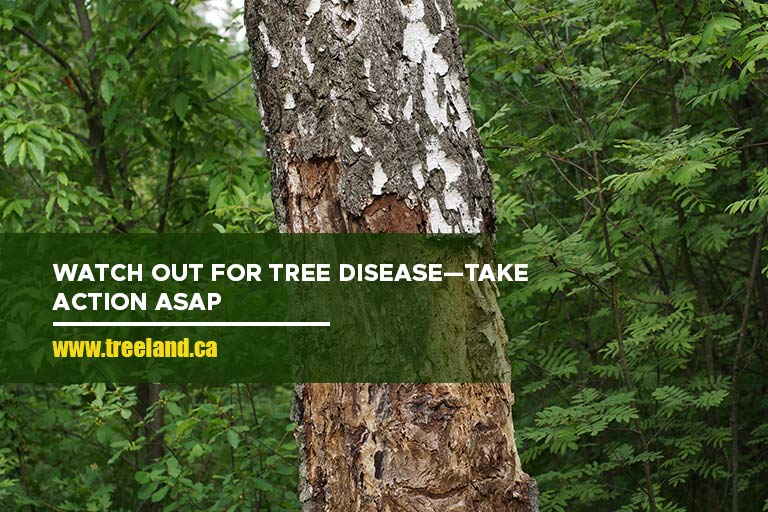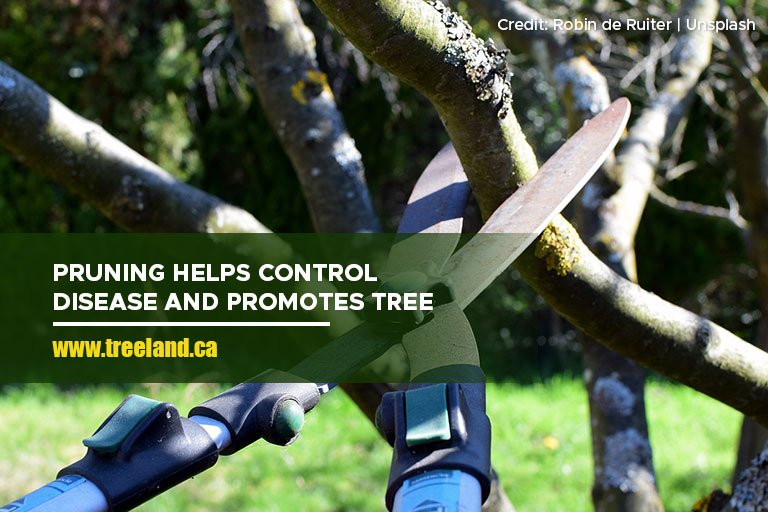Trees are not just silent spectators in our environment; they are living organisms that contribute immensely to our ecosystem’s health and beauty. Maintaining their health and preventing diseases is crucial for ensuring their longevity and vitality.
This comprehensive guide delves into the intricacies of tree health, disease prevention, and effective tree care tips.
Understanding Tree Health
Trees play a vital role in purifying the air, providing shade, and enhancing the aesthetics of our surroundings. However, just like other living beings, they are susceptible to diseases and environmental stressors. Therefore, comprehending the fundamentals of tree health and disease prevention is paramount.
Tree health is influenced by various factors, including environmental conditions, soil quality, and nutrient levels. Vigorous growth, full foliage, and resilience to stress are telltale signs of healthy trees.
Factors Affecting Tree Health
- Environmental Conditions
-
- Adequate sunlight and water play pivotal roles in sustaining tree health. Trees thrive in environments with moderate temperatures and consistent moisture levels, which support photosynthesis and nutrient uptake.
- Extreme weather conditions, such as drought or frost, can adversely affect trees. Prolonged periods of drought can lead to water stress and reduced growth, while frost damage can cause tissue injury and susceptibility to diseases.
- Soil Quality
-
- Well-drained and nutrient-rich soil is conducive to healthy tree growth. Aeration and proper drainage facilitate root respiration and nutrient absorption, while balanced soil pH ensures optimal nutrient availability.
- Soil compaction and poor drainage can hinder root development and nutrient uptake. Compacted soil restricts root growth and reduces water infiltration, leading to waterlogged conditions and nutrient deficiencies.
- Nutrient Levels:
-
- Trees require essential nutrients, such as nitrogen, phosphorus, and potassium, for optimal growth. Nitrogen promotes leaf and shoot development, phosphorus supports root growth and flower formation, and potassium aids in overall plant vigour.
- Nutrient deficiencies can manifest as stunted growth, yellowing leaves, and increased susceptibility to diseases. Regular soil testing and fertilization programs can help maintain optimal nutrient levels and prevent deficiencies.
Common Tree Diseases

Identifying and understanding common tree diseases is essential for prompt intervention and mitigation of their impact on tree health. Trees are susceptible to various diseases caused by fungi, bacteria, viruses, and environmental stressors. By recognizing the signs and symptoms of these diseases, arborists and homeowners can take proactive measures to protect tree health and prevent further spread.
Tree Disease Identification and Symptoms
- Leaf Diseases
Many tree diseases manifest as abnormalities in leaf appearance. Common symptoms include discoloration, wilting, curling, and premature leaf drop. Fungal pathogens like powdery mildew, leaf spot, and rust can cause unsightly lesions and reduce photosynthetic capacity, weakening the tree’s overall health.
- Root Diseases
Below-ground pathogens can compromise root integrity and inhibit nutrient uptake, leading to stunted growth and decline. Root rot, caused by fungi such as Armillaria and Phytophthora, is a common ailment that affects trees’ vascular systems and can result in structural instability and eventual death.
- Bark Diseases
Bark diseases can have devastating effects on tree health and structural integrity. Bacterial cankers, such as fire blight in fruit trees and bacterial wetwood in hardwoods, cause oozing lesions and can spread rapidly throughout the tree’s vascular tissues, obstructing nutrient flow and weakening branches.
- Vascular Diseases
Diseases affecting the tree’s vascular system, such as Verticillium wilt and Dutch Elm Disease, disrupt water and nutrient transport, causing wilting, leaf chlorosis, and dieback. These diseases are often fatal if left untreated and require prompt intervention to prevent widespread mortality.
- Fungal Infections
Many tree diseases are caused by pathogenic fungi that invade tree tissues through wounds or openings. Fungal infections like anthracnose, powdery mildew, and oak wilt proliferate under favourable environmental conditions and can cause extensive damage to foliage, branches, and trunk tissues.
- Viral Diseases
Viral pathogens can induce a range of symptoms in trees, including leaf mottling, stunted growth, and deformities. While viral diseases are less common in trees compared to other pathogens, they can still pose significant threats to tree health and productivity.
Tree Pest Control
Tree pests, including insects, mites, and rodents, can wreak havoc on tree health if left unchecked. These pests can damage leaves, bark, and roots, disrupt nutrient uptake, and spread diseases among trees in urban and natural environments. Understanding the types of tree pests and implementing effective control measures is essential for preserving tree health and vitality.
Types of Tree Pests
- Insects:
-
- Insects such as aphids, scales, and caterpillars feed on tree foliage and sap, causing defoliation, wilting, and deformities in leaves and branches.
- Boring insects like beetles and borers tunnel into tree bark and wood, weakening tree structure and making them susceptible to fungal infections and secondary pests.
- Mites
-
- Mites are microscopic arachnids that feed on tree sap and cause leaf stippling, discoloration, and distortion.
- Spider mites, in particular, are common pests that thrive in hot, dry conditions and can rapidly infest trees, leading to leaf loss and reduced photosynthesis.
- Rodents
-
- Rodents such as mice, rats, and squirrels can damage trees by gnawing on bark, roots, and branches.
- Bark gnawing exposes trees to fungal infections and girdling, which disrupts nutrient flow and can eventually kill the tree.
Prevention and Control Methods
- Integrated Pest Management (IPM)
-
- Integrated Pest Management (IPM) is a holistic approach to pest control that emphasizes prevention, monitoring, and intervention based on pest thresholds.
- IPM strategies include cultural practices such as pruning and sanitation, biological controls like introducing natural predators and parasites, and chemical treatments as a last resort.
- Cultural Practices
-
- Cultural practices such as proper pruning, mulching, and watering can promote tree health and reduce susceptibility to pests.
- Removing dead or diseased branches, improving soil fertility, and maintaining proper plant spacing can minimize pest habitat and food sources.
- Biological Controls
-
- Introducing natural enemies of pests, such as predatory insects, birds, and beneficial nematodes, can help regulate pest populations and prevent outbreaks.
- Biological control agents like Bacillus thuringiensis (Bt) and predatory mites target specific pest species while minimizing harm to beneficial organisms and the environment.
Tree Maintenance for Health

Proper tree maintenance practices are essential for promoting tree health and resilience to diseases.
Pruning Techniques
- Regular pruning helps remove dead or diseased branches and promotes proper tree structure and growth.
- Pruning cuts should be made at the branch collar to facilitate wound closure and prevent pathogen entry.
Proper Watering Practices
- Deep, infrequent watering encourages deep root growth and drought tolerance.
- Mulching helps retain soil moisture, suppresses weed growth, and regulates soil temperature.
Soil Management
- Soil aeration and amendment with organic matter enhance soil structure and nutrient availability.
- Avoid compaction and soil disturbance around tree roots to prevent root damage and promote healthy root growth.
Disease Prevention for Trees
Preventative measures are key to mitigating the risk of tree diseases and preserving tree health.
Boosting Tree Immunity
- Proper nutrition, adequate water, and optimal growing conditions bolster tree immunity against diseases.
- Mulching and composting enrich the soil microbiome and enhance tree resilience.
Preventative Tree Disease Treatments
- Applying fungicides and bactericides can help prevent fungal and bacterial infections in susceptible trees.
- Regular monitoring and timely intervention are critical for early detection and management of potential disease outbreaks.
Tree Care Tips
Regular inspections, proper planting techniques, seasonal maintenance, and professional arborist consultations are indispensable components of effective tree care.
By implementing proactive tree care practices and adopting sustainable pest management strategies, we can ensure the vitality and longevity of our beloved trees. Remember, healthy trees not only enhance the beauty of our landscapes but also contribute to a healthier environment. For high-quality trees for sale in Stouffville, contact us at (905) 880-1828.
As stewards of the environment, let us strive to nurture and protect our trees for generations to come.

